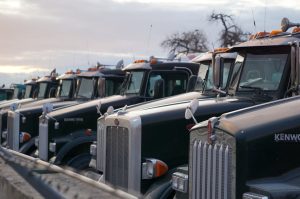Burnes Libman Law Group explore the question “what is a commercial vehicle?”
When we think of the term “commercial vehicle”, 18 wheeler or semi-truck comes to mind. The shocking truth is the number of large trucks and buses in fatal crashes has increased by 48% from 2009 to 2018 and is continuing to grow every year due to increased trade and shipping demands. The common question now becomes “how do you define a commercial vehicle”?
Commercial vehicle definition, according to the Federal Motor Carrier Safety Regulations is any self-propelled or towed motor vehicle in interstate commerce to transport passengers or property when the vehicle is in interstate commerce or transporting passengers or property. In case one such vehicle is part of an accident, you would have to get in touch with a commercial vehicle accident lawyer; someone who specialises in such cases.
“Interstate commerce” can be defined in three situations. First, when a vehicle is driving between a place in a state to a place outside the state. Second, when a vehicle is driving between two places within a state through another state. For example, the vehicle is driving from Galesburg, IL to Galena, IL but on the way, the vehicle passes through Iowa. And third, between two places in a state as part of a trade, traffic, or transportation originating outside the State or the United States.
Second, in order to be defined as a “commercial motor vehicle”, the vehicle can either be involved in transferring persons or property. Some examples of what is considered a commercial vehicle can include a commercial bus carrying more than 8 people, a 14 passenger van, an eighteen-wheeler, or a tractor-trailer.
If the vehicle is in interstate commerce and is transporting either passengers or property, it may be a commercial vehicle. However, the Federal Motor Carrier Safety Administration requires that the vehicle has a weight of 10,001 or more, is designed to or used to transport more than 8 passengers including the driver for compensation, is designed or used to transport more than 15 passengers including the driver and is not used to transport passengers for compensation or used in transporting certain hazardous materials, like flammable liquids or batteries. In case of any violations of these rules resulting in damage or accident, the victim is entitled to commercial vehicle accident settlement.
This means that a consumer pick-up truck carrying a bed full of plywood that weighs 9,000 pounds will not qualify even if it drives from California to Louisiana. Alternatively, a pickup truck could qualify if it is carrying certain hazardous materials. An Uber carrying a 10 player soccer team from Tuscaloosa, AL to Columbus, MI may also qualify. A wide variety of vehicles can be considered commercial motor vehicles under the regulations.
Now, the question can be asked: “Are there any vehicles that can be excluded?” In section 390.3 of the regulations issued by FMCSA, vehicles such as school buses, transportation performed by the government, personal transportation not for profit, corpses, fire and emergency rescue vehicles, and emergency-related operations are excluded.
Also, certain off-road motorised vehicles do not count as “motor vehicles” or “commercial motor vehicles” under the regulations. An off-road motorised vehicle is by design and function not intended for transportation purposes. Examples include vehicles like backhoes, graders, and bulldozers.
The definition of a “commercial vehicle” can be a complicated one. To learn more about commercial motor vehicles under federal law, visit: www.burneslibman.com/what-is-a-commercial-vehicle.





















